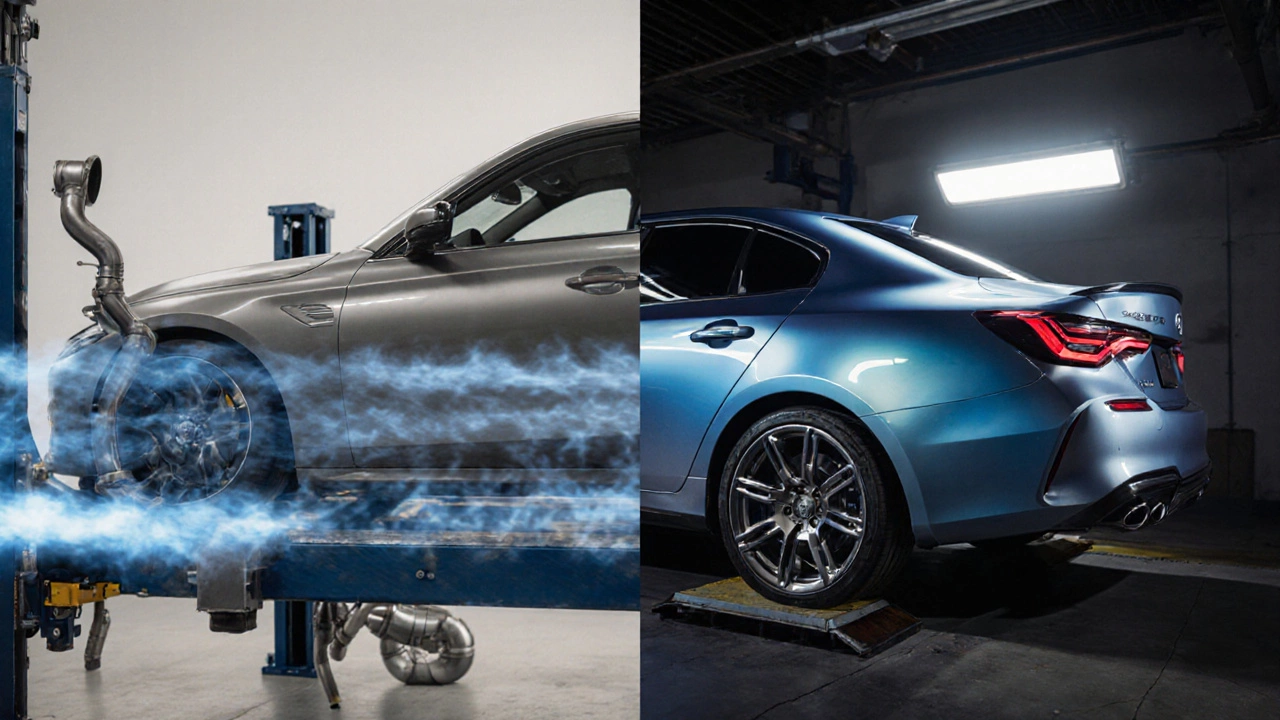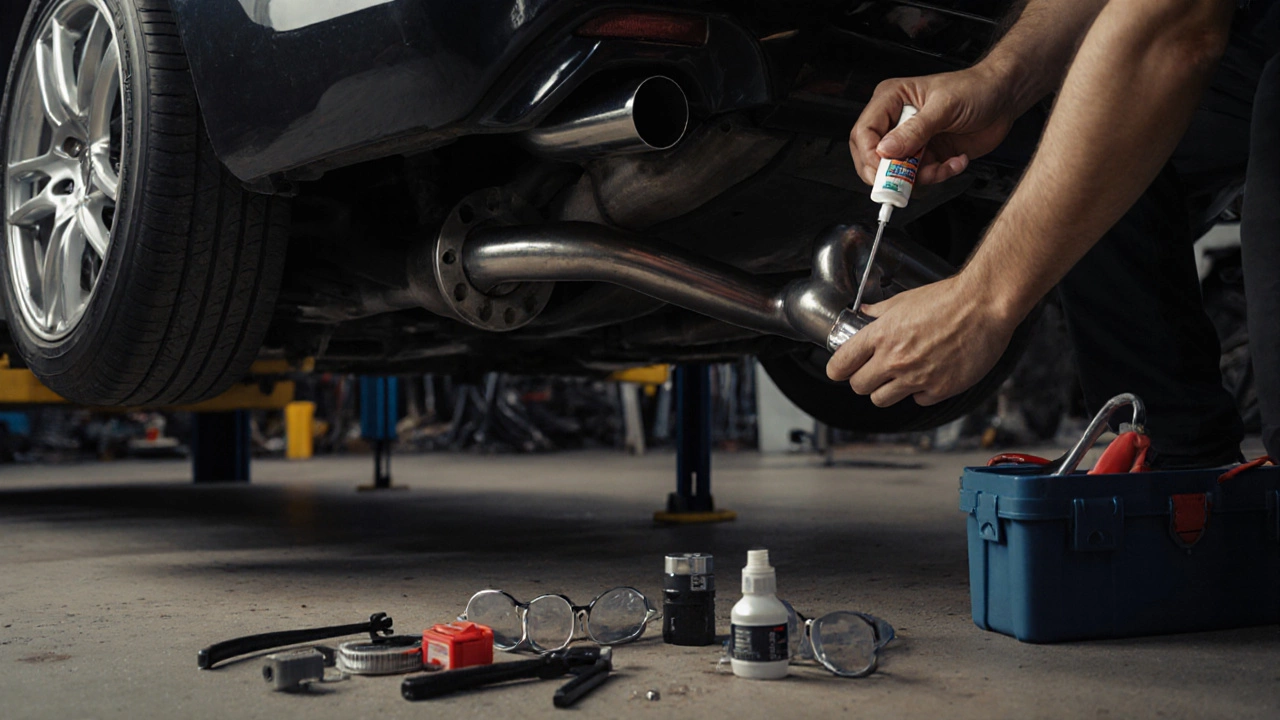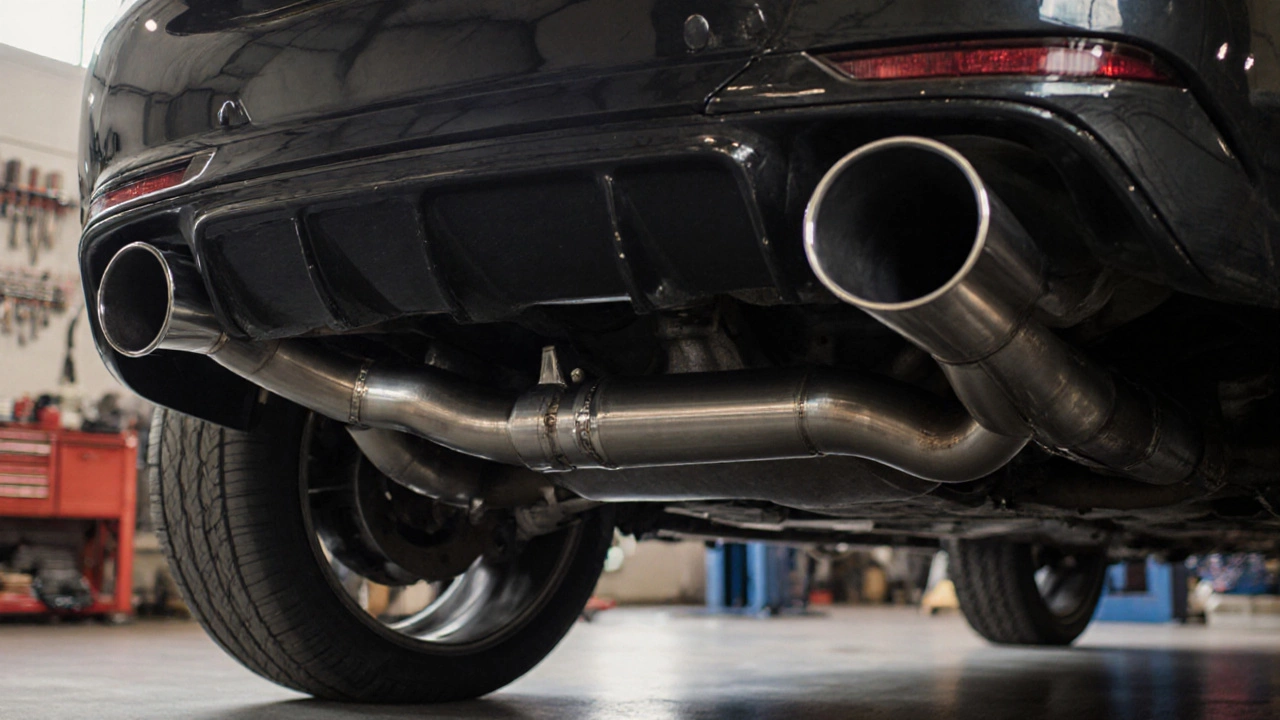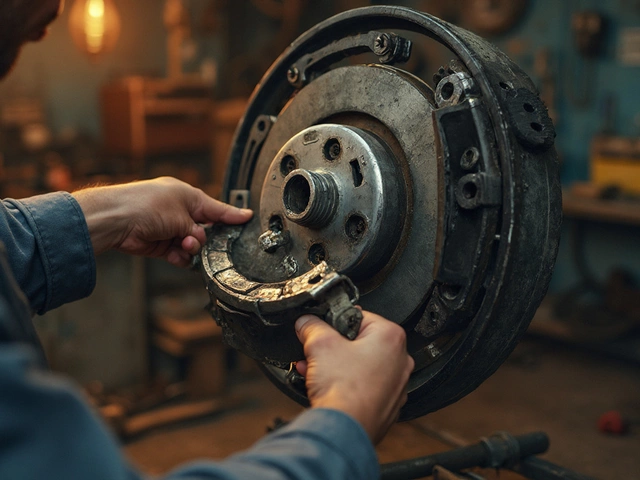Catback Exhaust System Calculator
Estimated Results
Estimated Power Gain:
Cost Range:
Recommended Features:
When you hear the term catback exhaust system is a type of aftermarket exhaust that replaces everything from the catalytic converter to the tailpipe, while leaving the front‑end components such as the header and manifold untouched. In simple terms, it’s the “back‑end” of the exhaust chain, and it’s a popular first upgrade for anyone wanting a louder note, a bit more power, or just a cleaner look under the car.
Where a Catback Fits in the Exhaust Layout
The stock exhaust starts with the exhaust manifold which gathers gases from each cylinder and feeds them into the header. From there, the gases travel through the catalytic converter a emissions‑control device that reduces harmful pollutants. The catback kit picks up right after that point and replaces the stock pipe, muffler, resonator, and tailpipe with larger‑diameter, less restrictive parts.
Key Components of a Catback Kit
- Pipe Straight or mandrel‑bent tubing that moves exhaust gases toward the muffler
- Muffler The primary sound‑damping chamber that can be tuned for louder or quieter notes
- Resonator A secondary chamber that smooths out frequencies and can reduce drone
- Tailpipe The final outlet; often shaped for visual flair and to direct flow away from the under‑car area

Performance Impact: How Much Power Can You Expect?
Because a catback reduces exhaust backpressure, the engine can exhale a little easier. Real‑world tests on a 2023 V6 sedan showed an average gain of 4% horsepower and 3% torque - roughly 12hp and 12lb‑ft at the wheels. A larger V8 pickup with a more restrictive stock system typically sees 5‑7% gains, translating to 15‑25hp. The exact numbers depend on engine size, stock flow constraints, and how aggressive the catback design is.
Beyond raw power, the biggest felt change is the sound. A well‑chosen muffler can add 3‑6dB of noise, turning a whine into a pleasant rumble without crossing legal limits.
Installation Basics: DIY or Pro?
- Gather tools. You’ll need a socket set, screwdrivers, penetrating oil, a pipe cutter (if trimming is required), and safety glasses.
- Lift the car. Securely jack up the rear and support it on stands. Never work under a car supported only by a jack.
- Detach the stock back‑end. Spray penetrating oil on the clamps at the catalytic converter flange, then loosen and remove the pipe, muffler, resonator, and tailpipe.
- Prep the new parts. If the kit isn’t a direct‑fit, lightly sand the mating surfaces and apply a high‑temperature RTV sealant to ensure a leak‑free seal.
- Assemble the catback. Start from the catalytic converter flange and work backward, tightening clamps to the manufacturer’s torque specs.
- Check for leaks. Start the engine and listen for hissing. A quick visual inspection for escaping smoke will confirm a proper seal.
If you’re uncomfortable with any of these steps, a professional install typically costs $150‑$250, which includes a warranty on the labor.
Choosing the Right Catback for Your Car
Not all catbacks are created equal. Here’s a quick cheat‑sheet to match your goals:
- Street‑friendly. Look for stainless‑steel, mandrel‑bent tubing, and a muffler tuned for low‑drone.
- Track‑oriented. Chromoly or titanium pipes, straight‑through mufflers, and minimal resonators maximize flow at the cost of higher sound levels.
- Visual focus. Some kits add flare‑cut tailpipes or polished tips that pop under the lights.
Pay attention to the pipe diameter. A 2.5‑inch pipe is common for V6 engines, while V8s often benefit from 3.0‑inch or larger. Going too big can actually reduce velocity and hurt low‑end torque.

Maintenance & Common Pitfalls
After installation, a catback doesn’t need much upkeep, but keep these points in mind:
- Check the clamps every 1,000mi for tightness - heat cycles can loosen them.
- Inspect the pipe for rust or corrosion, especially in salty climates. Stainless steel mitigates this, but titanium offers the best resistance.
- Avoid cheap rubber hangers; they degrade and can cause vibrations that lead to cracked pipes.
- If you notice a sudden loss of power, re‑check the catalytic converter flange for leaks - a broken seal can let fresh air in and mess with sensor readings.
Catback vs. Axle‑Back vs. Header‑Back: Quick Comparison
| Feature | Catback | Axle‑Back | Header‑Back |
|---|---|---|---|
| Replaces | Pipe, muffler, resonator, tailpipe | Muffler, tailpipe (sometimes resonator) | Header, pipe, muffler, resonator, tailpipe |
| Typical Power Gain | 4‑7% | 2‑4% | 8‑12% |
| Cost Range (USD) | $300‑$800 | $150‑$400 | $800‑$2,000 |
| Installation Difficulty | Medium (requires removal of cat) | Easy | Hard (requires welding, possible ECU tune) |
| Best For | Balanced power + sound upgrade | Sound‑only or aesthetic tweak | Maximum performance builds |
Frequently Asked Questions
Will a catback exhaust make my car illegal?
Most states regulate noise level rather than specific components. A catback tuned for street use stays within 80‑85dB at 75mph, which is legal in the majority of U.S. jurisdictions. Always check local ordinances before buying.
Do I need to tune the ECU after installing a catback?
For most mild catbacks, a tune isn’t required. However, if you pair the kit with a high‑flow intake or larger camshaft, a custom ECU map can unlock the full horsepower potential.
How long does a catback last?
Stainless steel catbacks often exceed 100,000mi with minimal rust. Titanium can last even longer but comes at a higher price. Regular inspection keeps the lifespan optimal.
Can I install a catback on a diesel truck?
Yes. Diesel engines benefit from reduced backpressure just as gasoline engines do. Look for kits specifically rated for diesel torque and heat.
Is there a noticeable fuel‑economy penalty?
Generally no. A freer‑flowing exhaust can even improve fuel efficiency slightly at highway speeds because the engine works less to push gases out.




